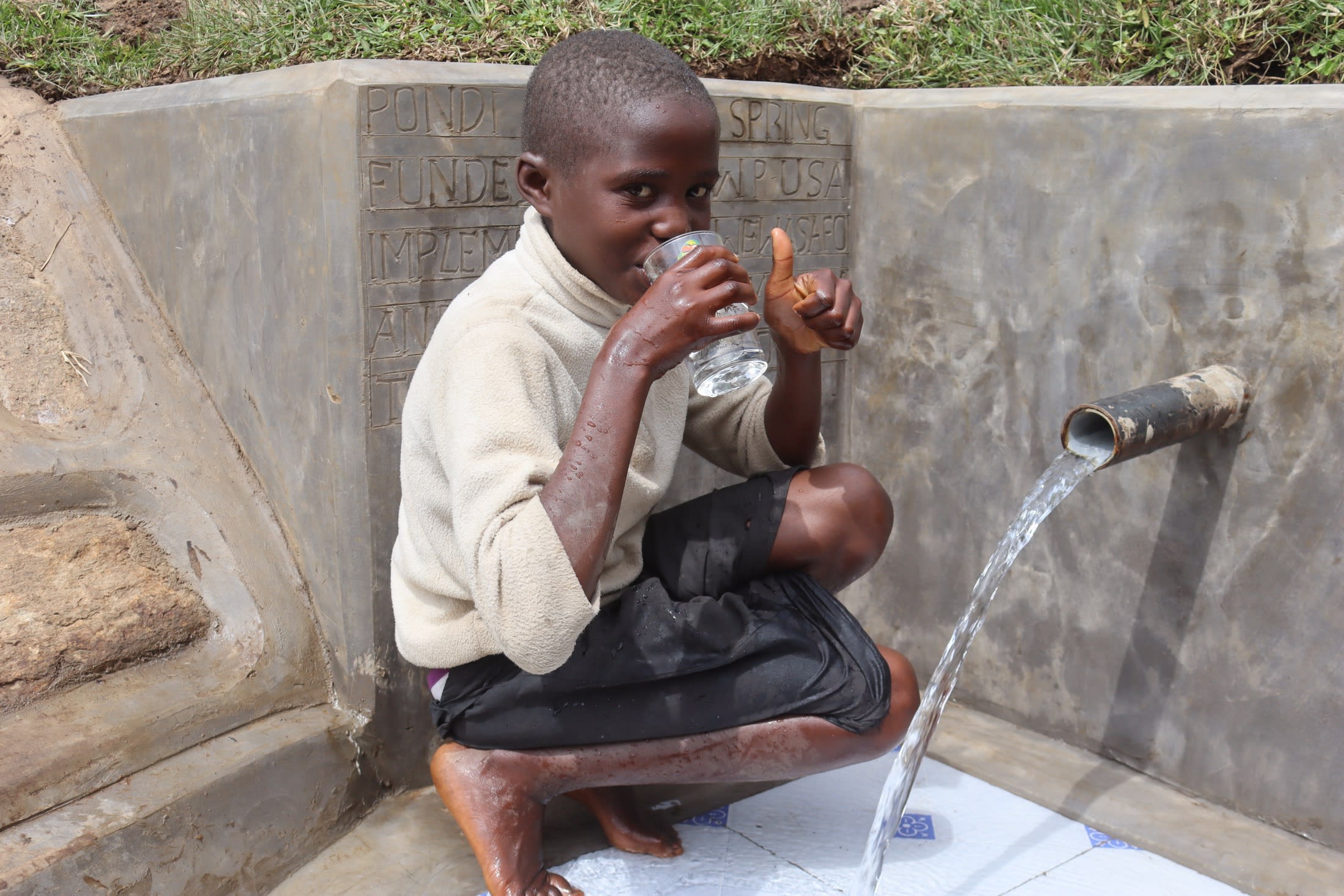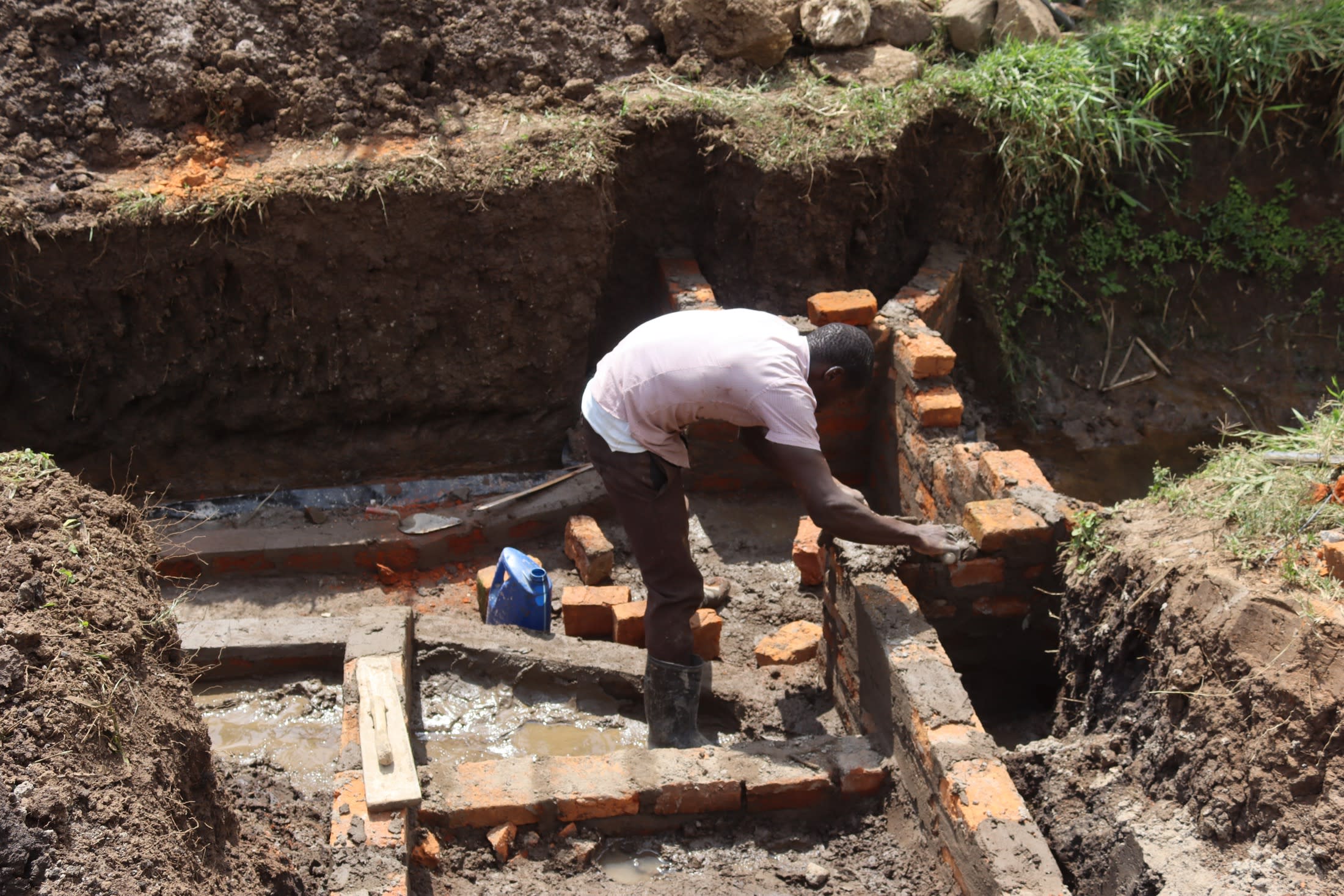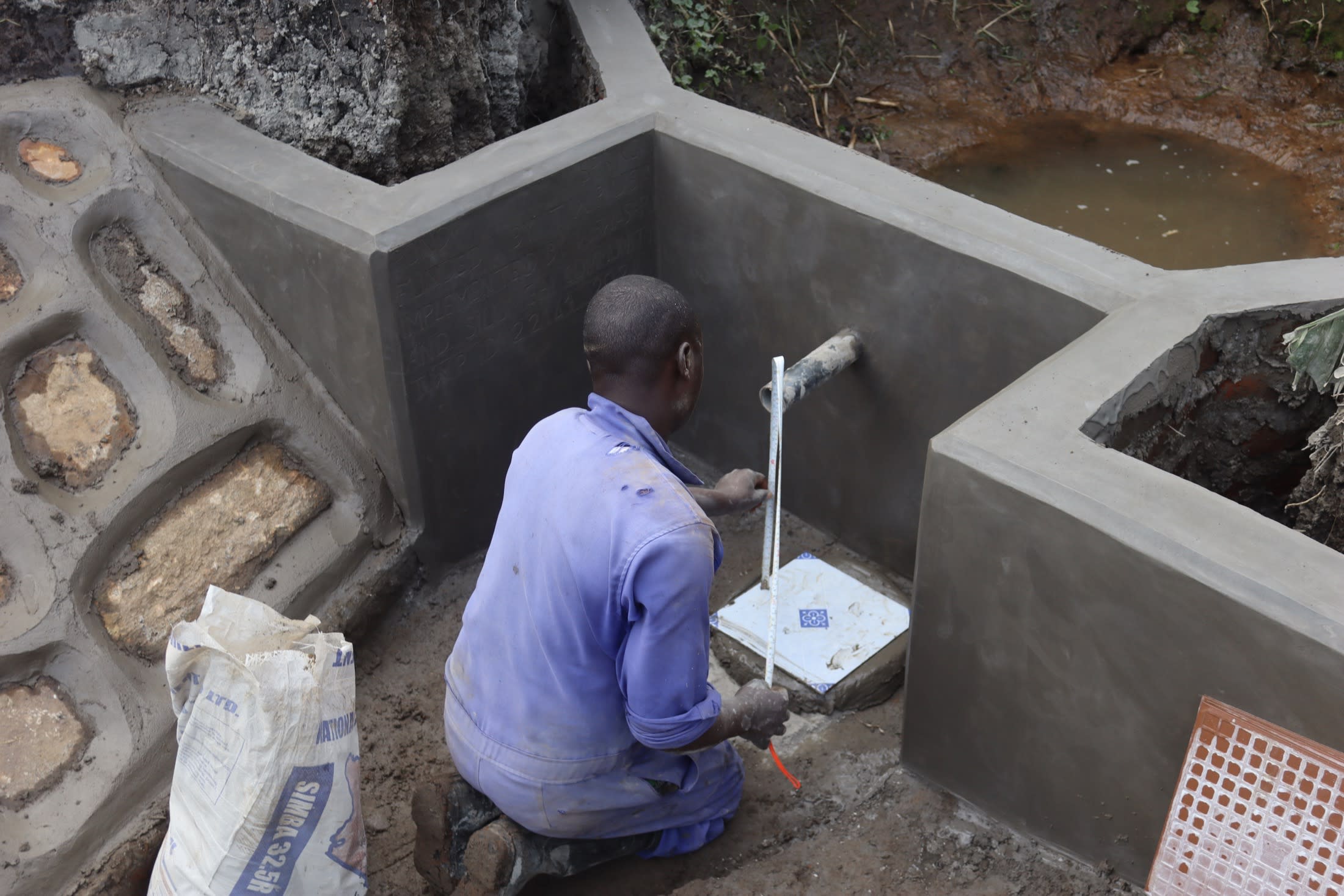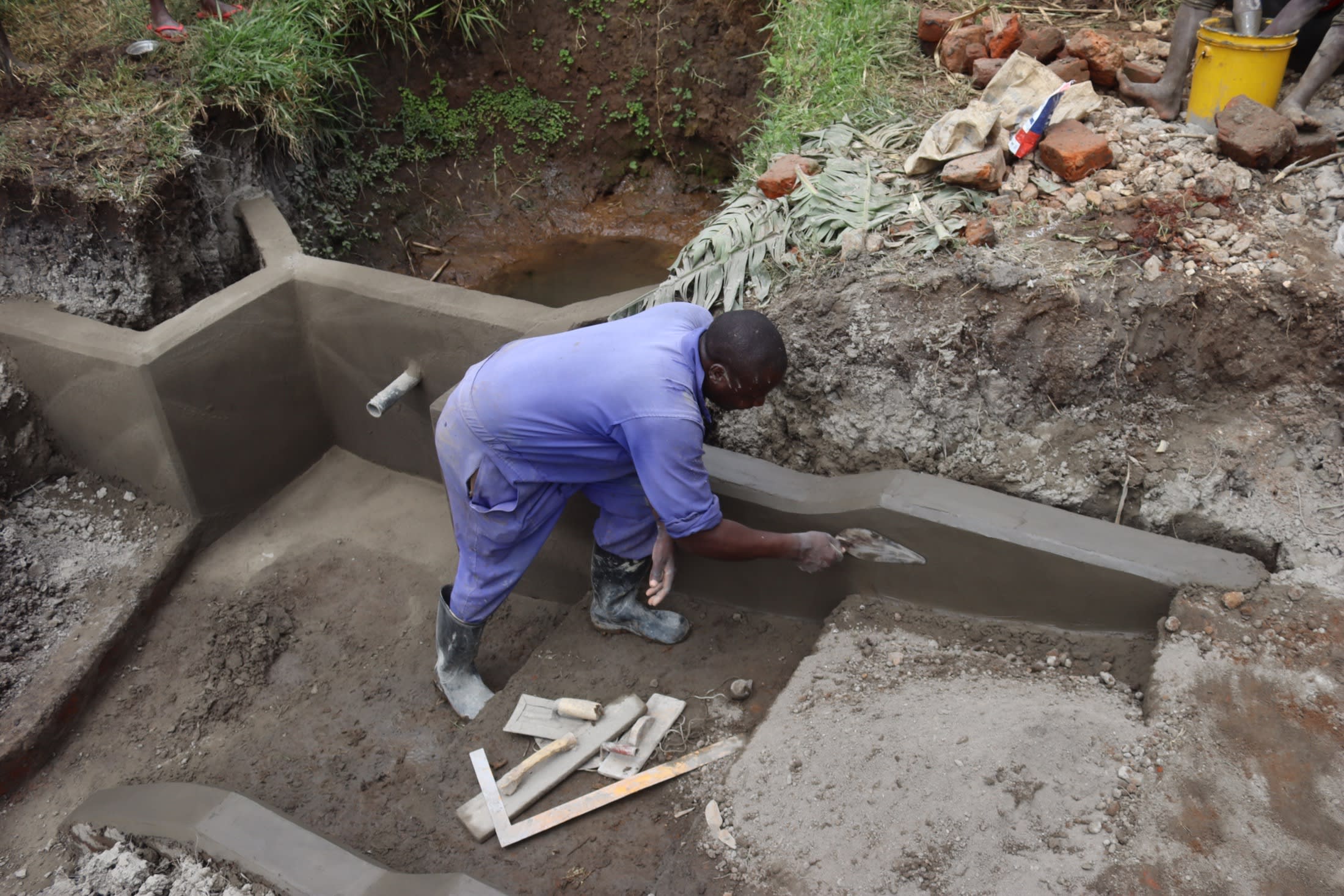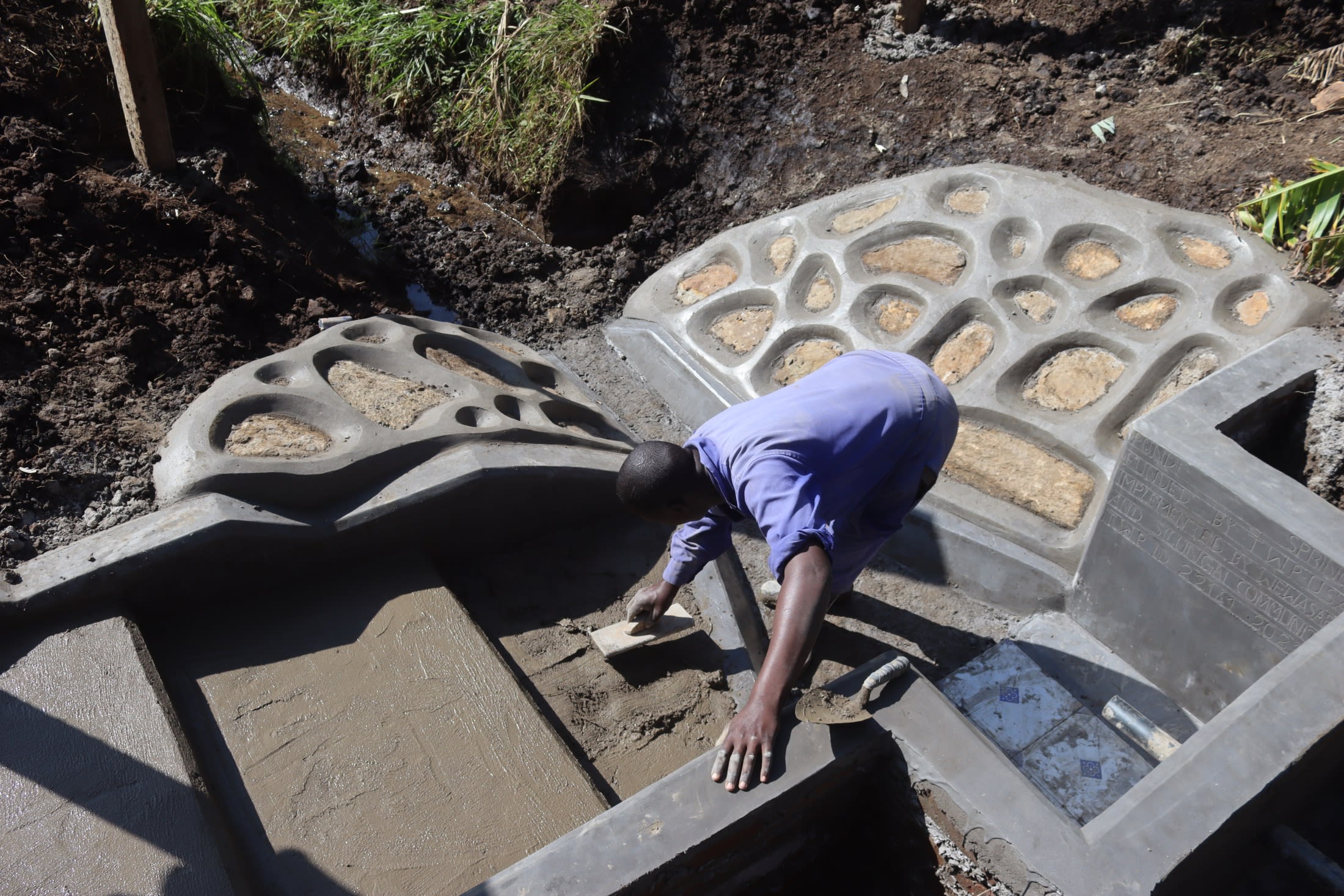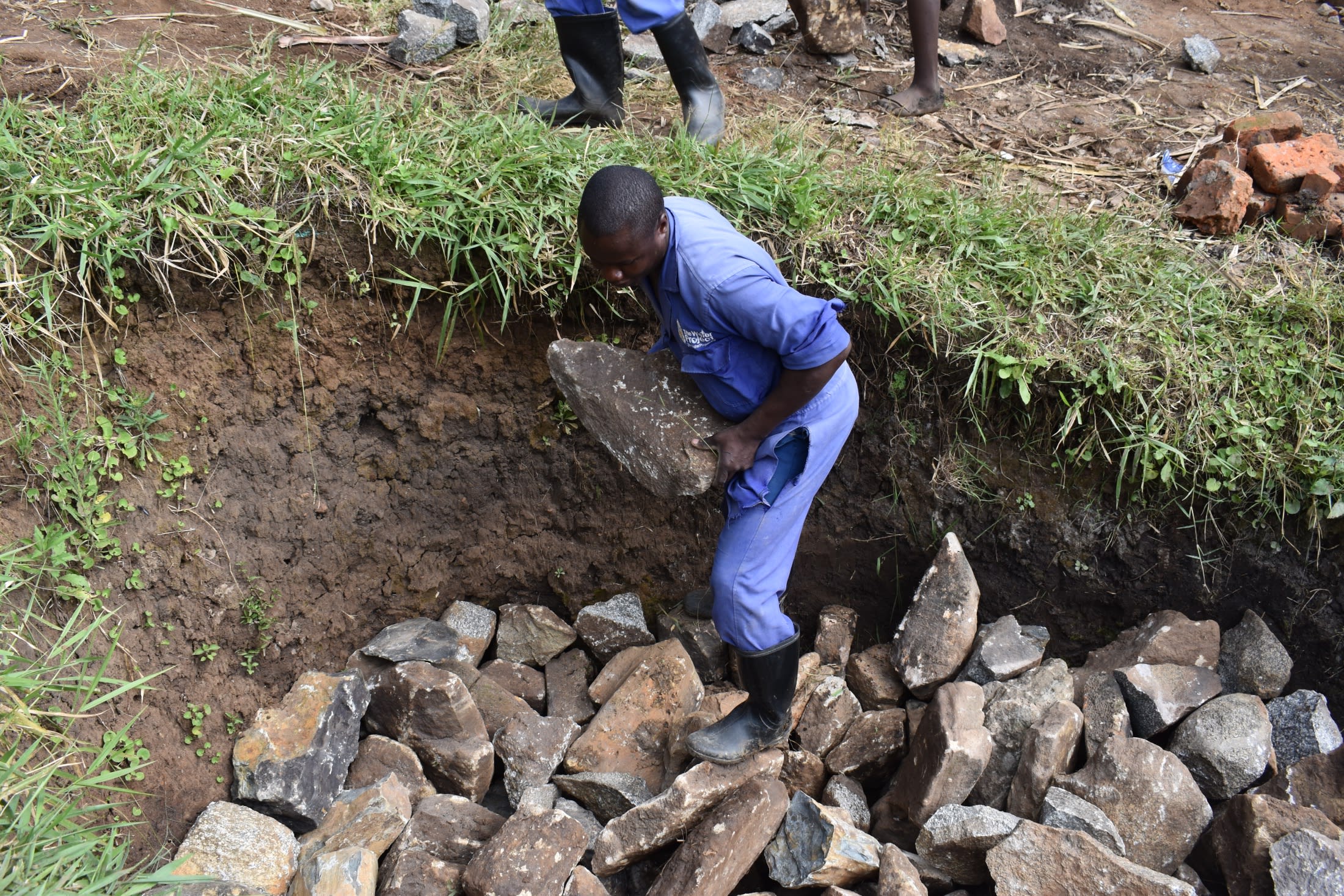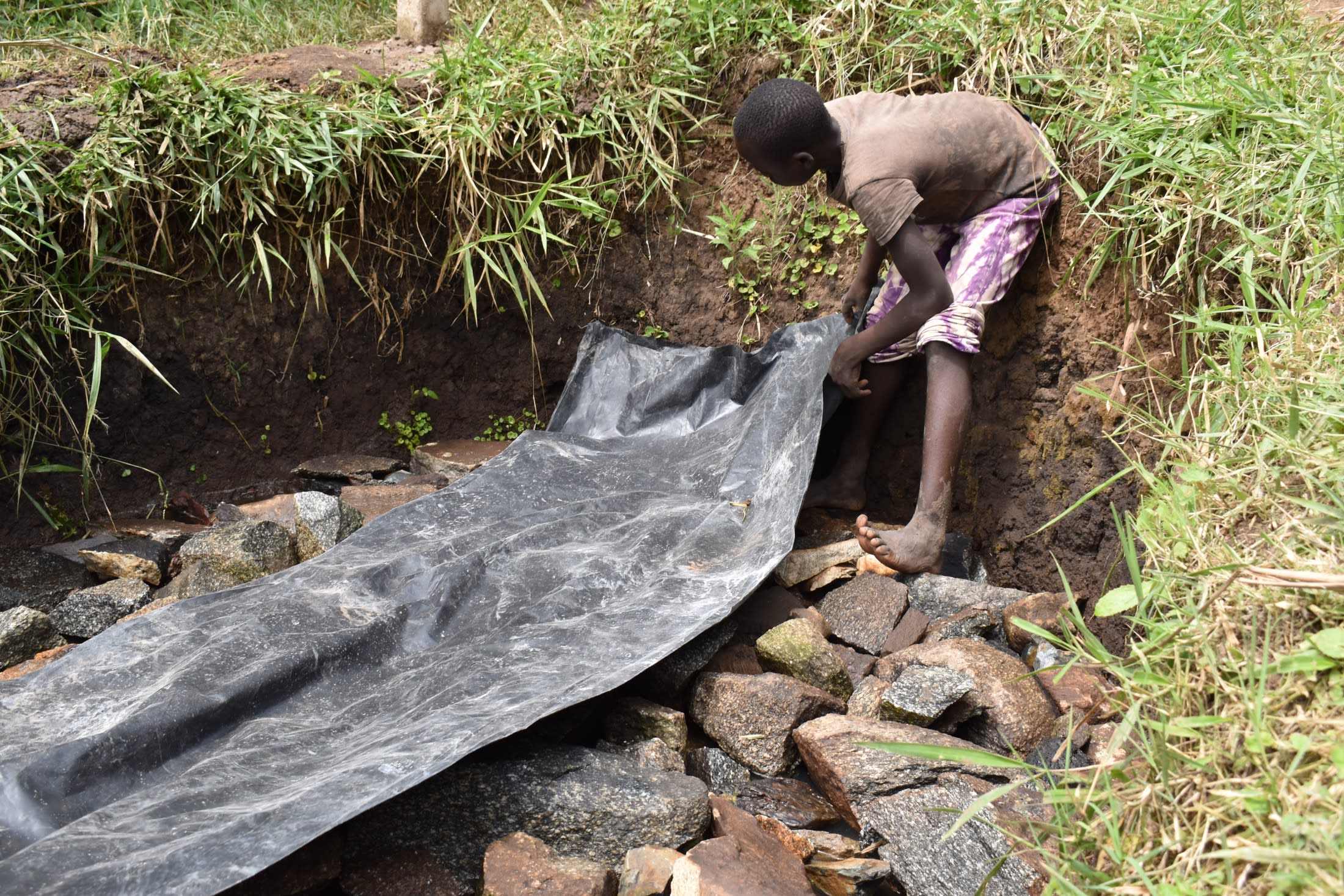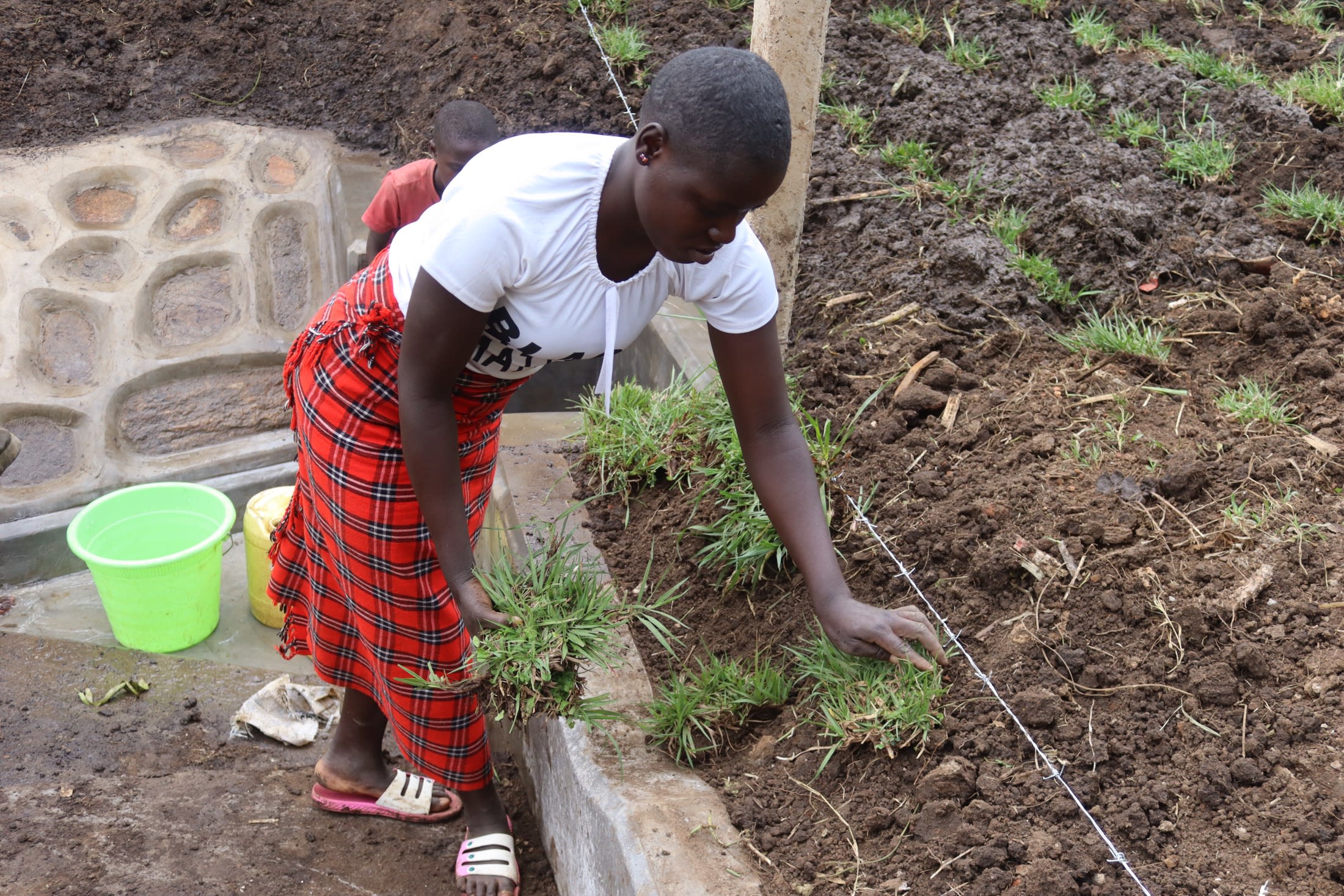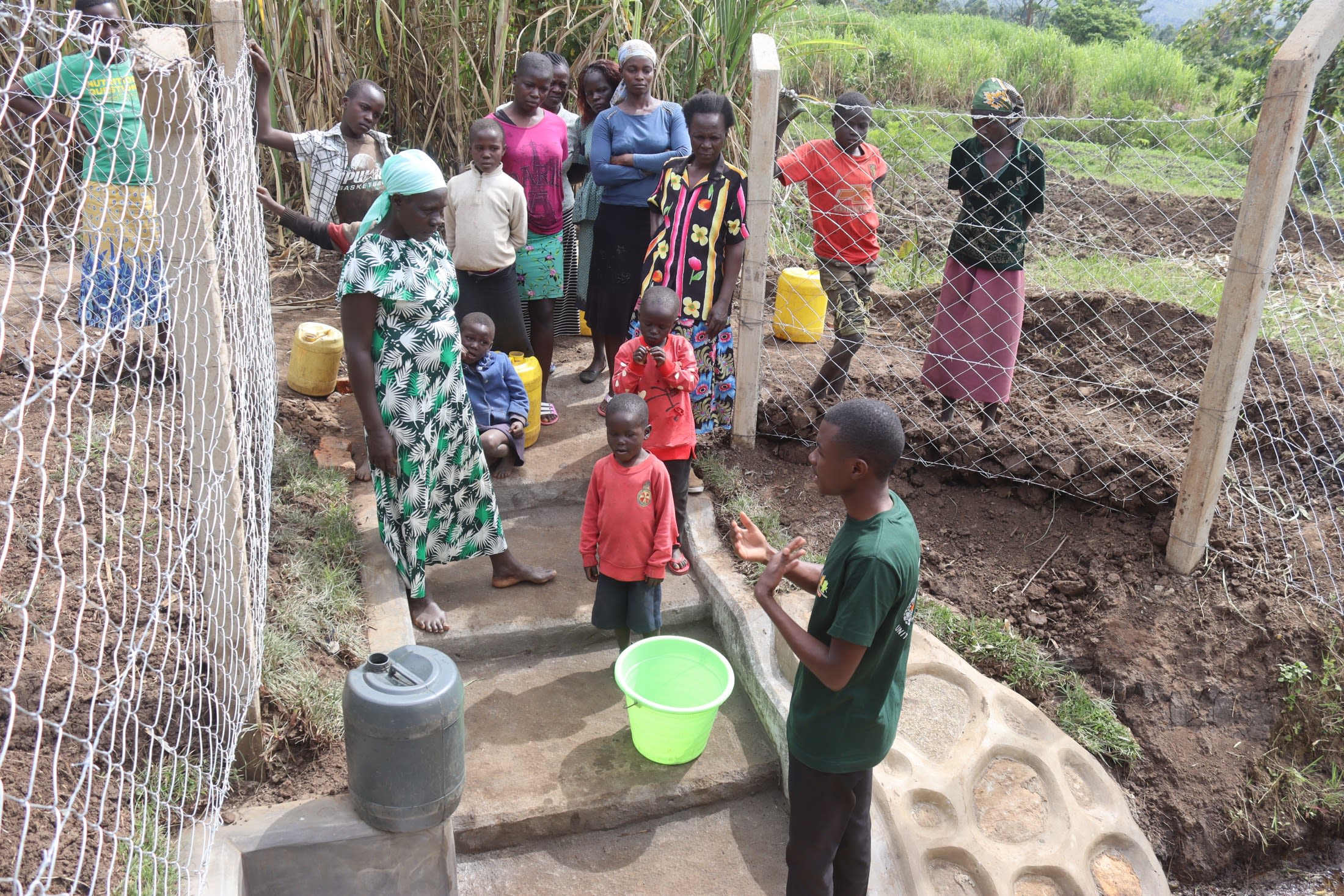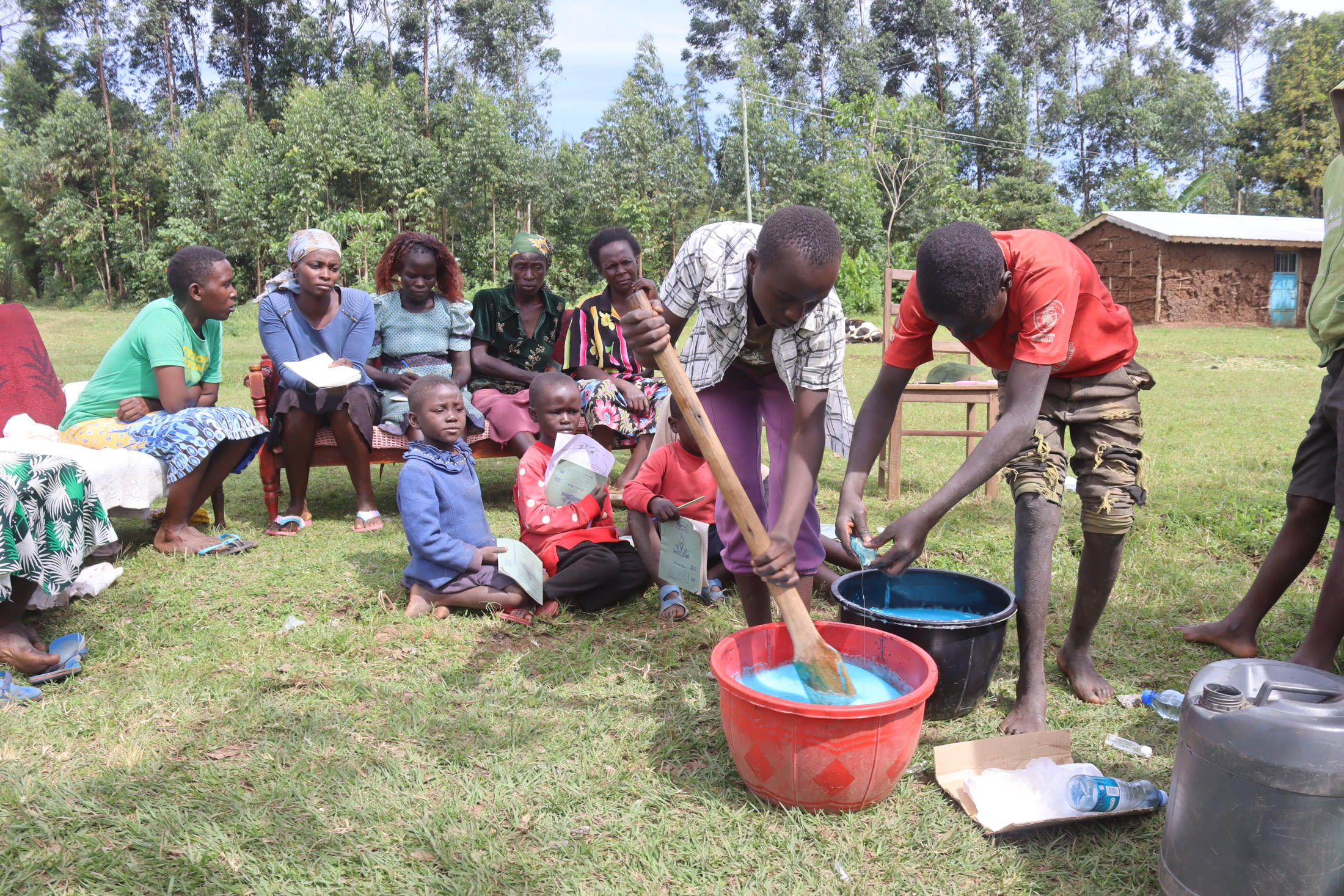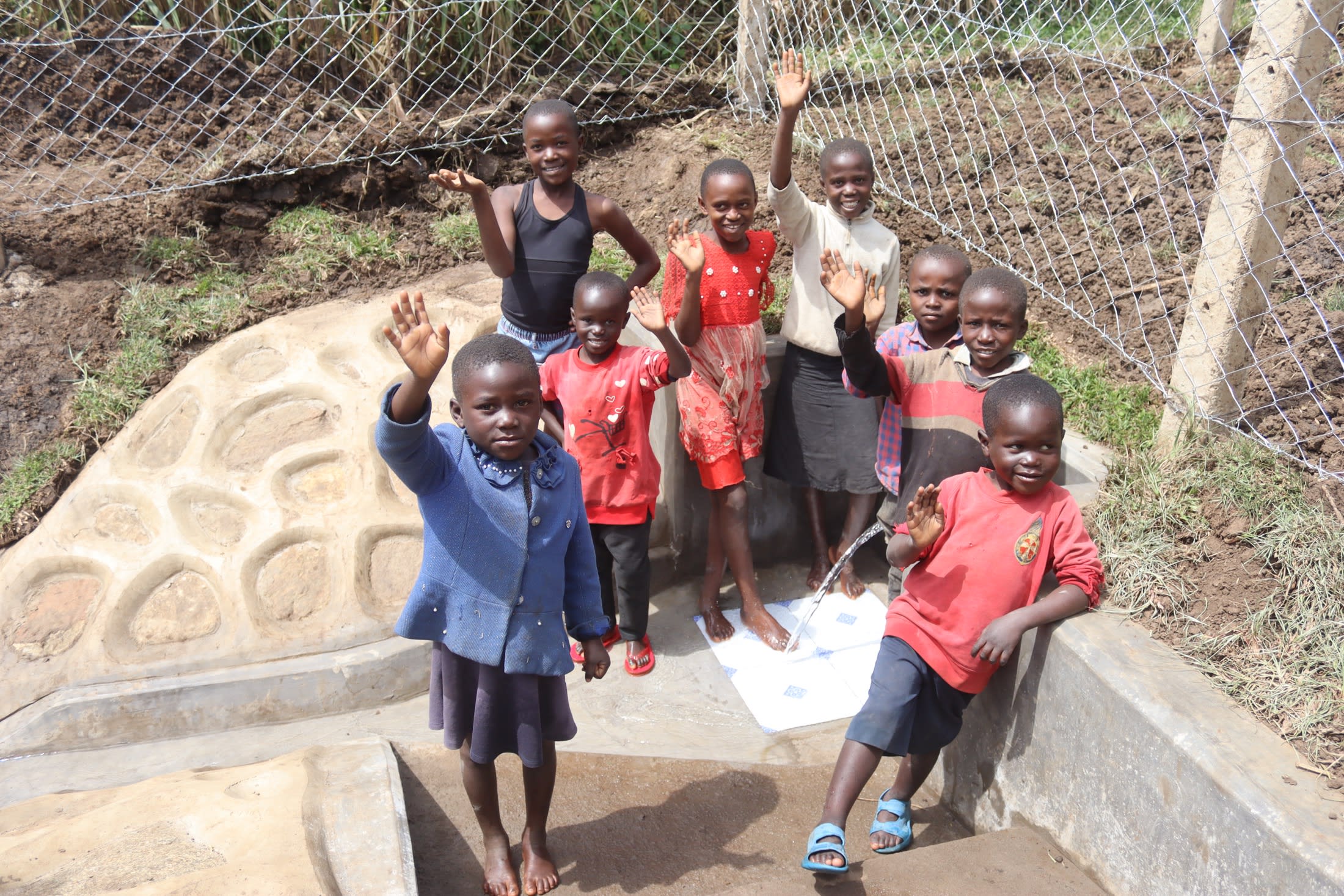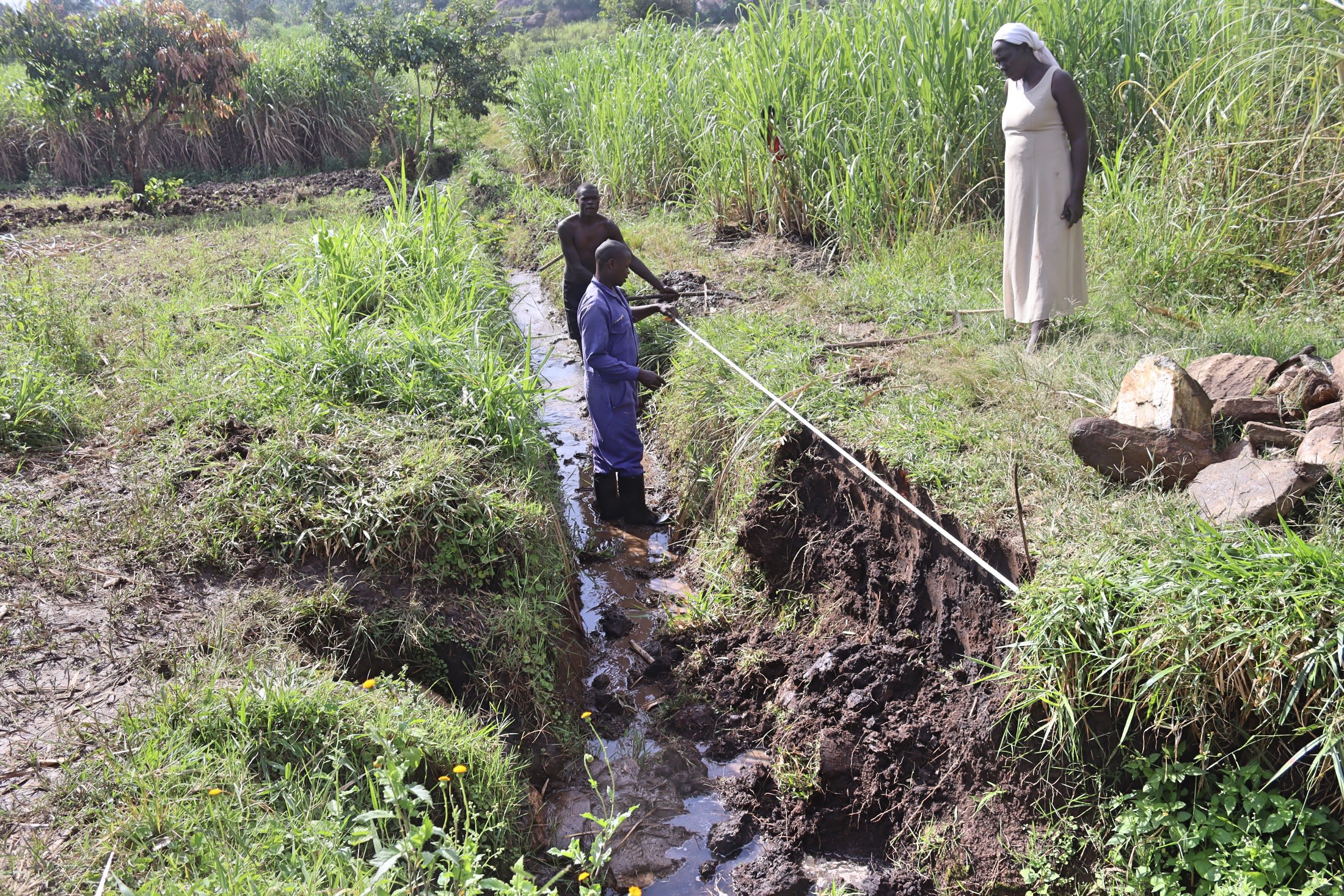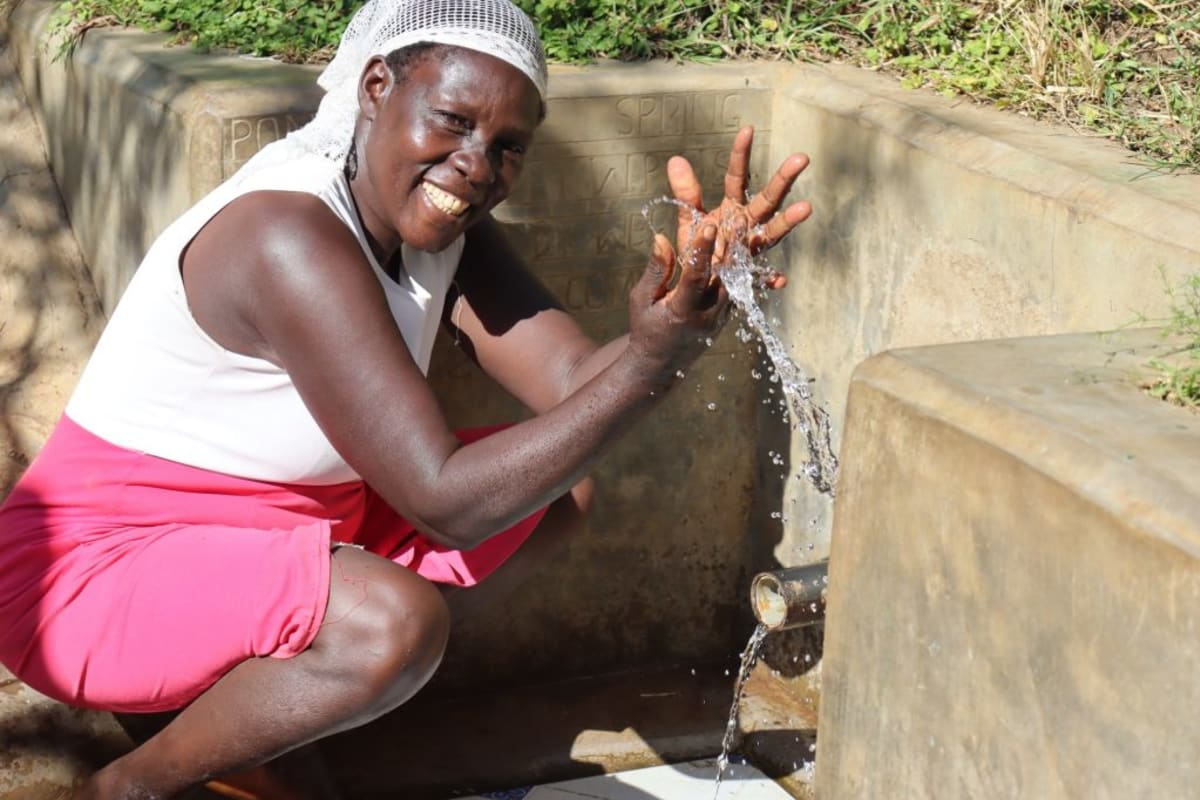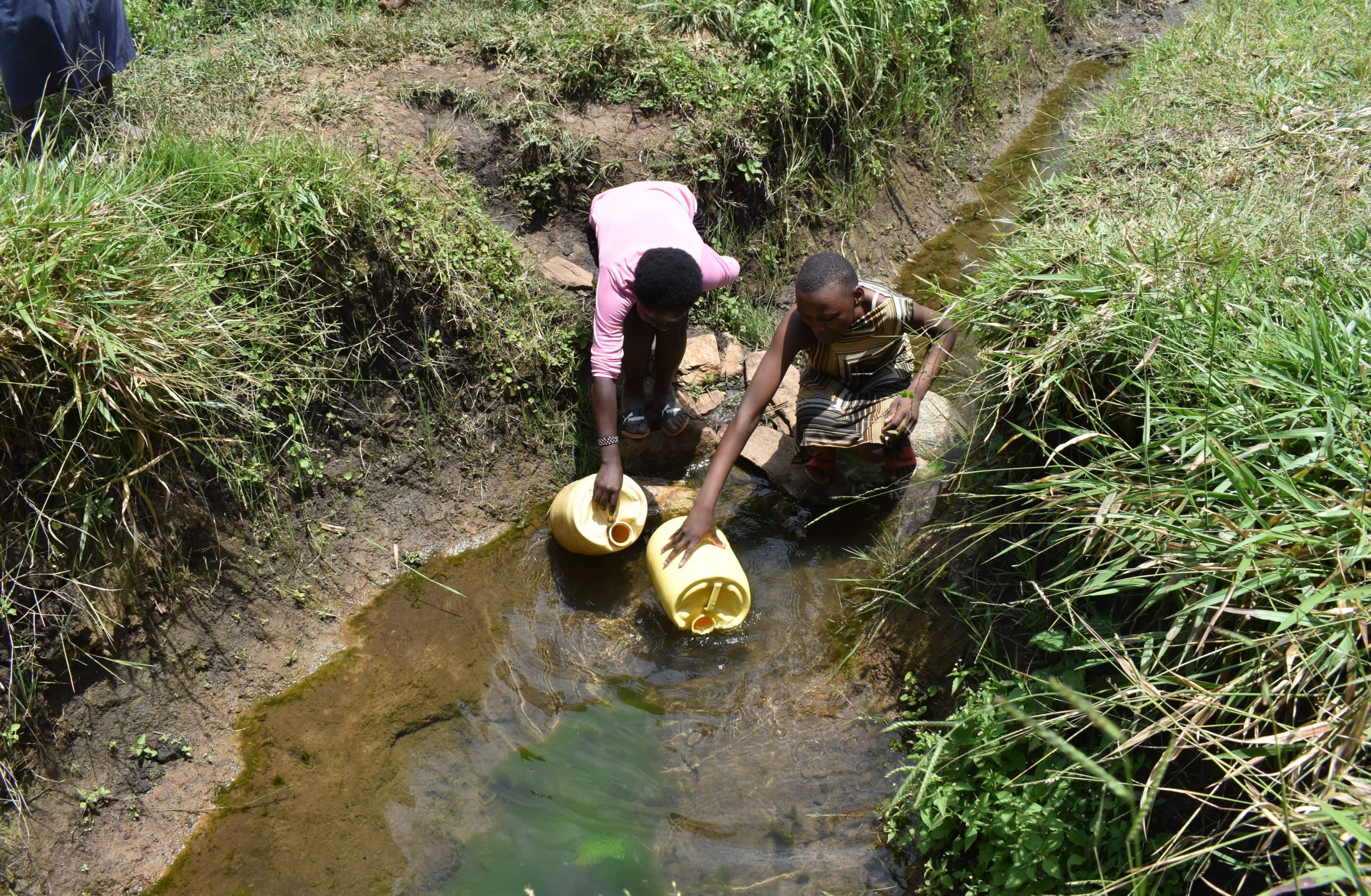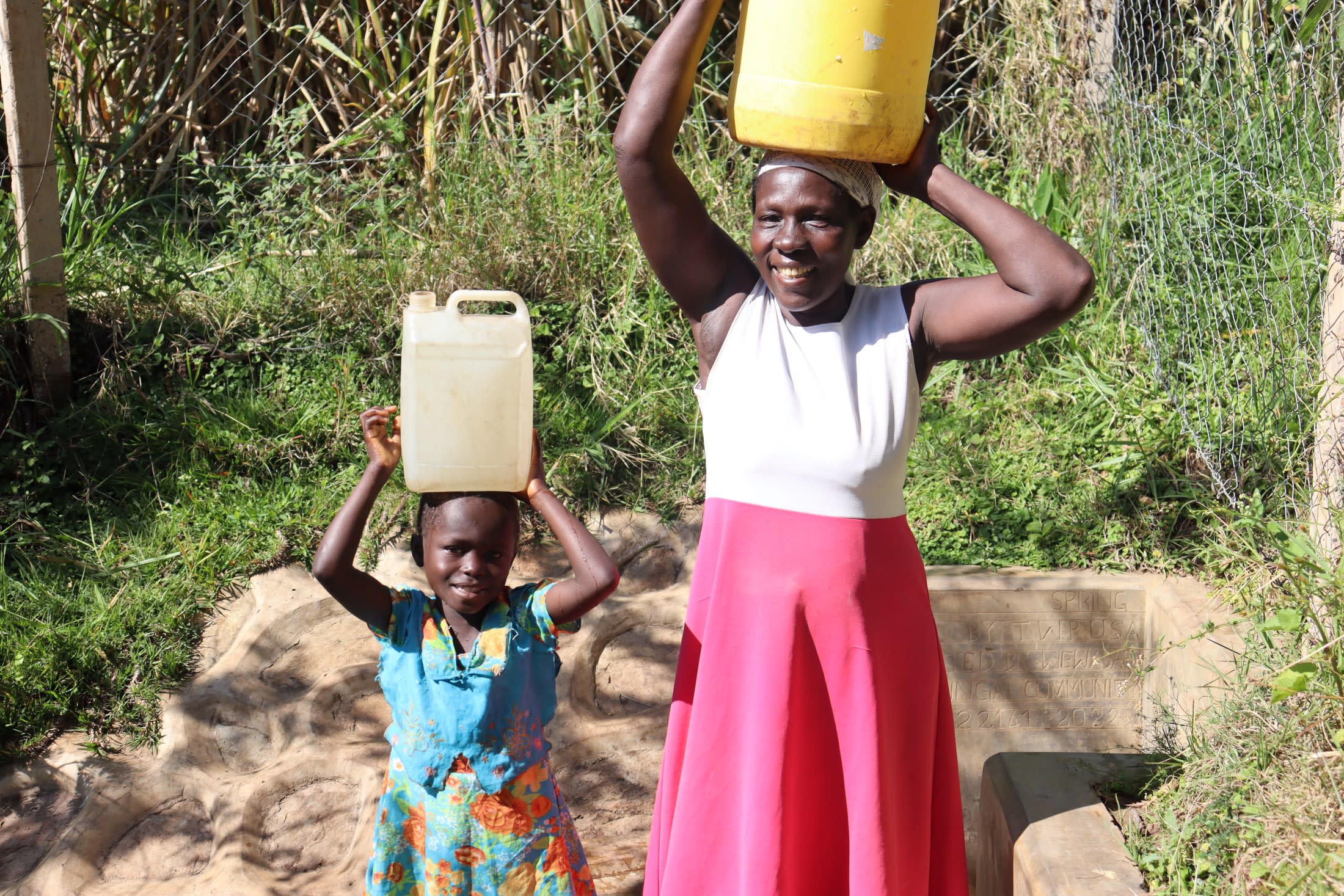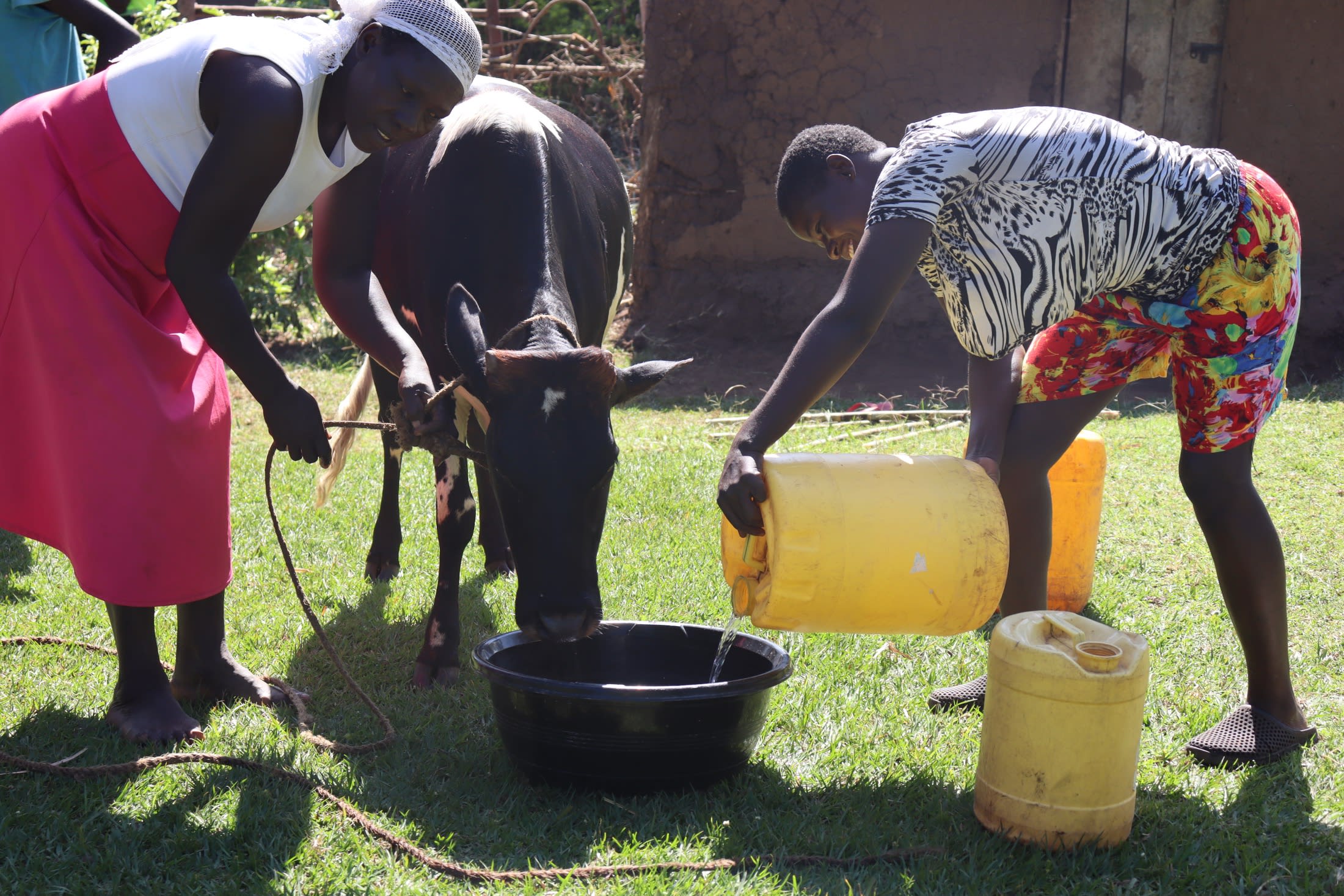Pondi Spring provides sufficient water for the 400 people living in Silungai, even through the dry season, yet it still presents multiple reasons for concern.

A deep cavity near the spring eye allows a pool of water to collect, but accessing the pool is very difficult. Community members must climb or slide down the steep bank to the bottom to retrieve water, then lay a collection container sideways in the water to fill it while they balance on rocks.
Understandably, it is even more treacherous to climb back out of the cavity with a heavy, full water container, trying hard not to spill the contents, especially during the rainy season when the grass and mud bank become slippery.
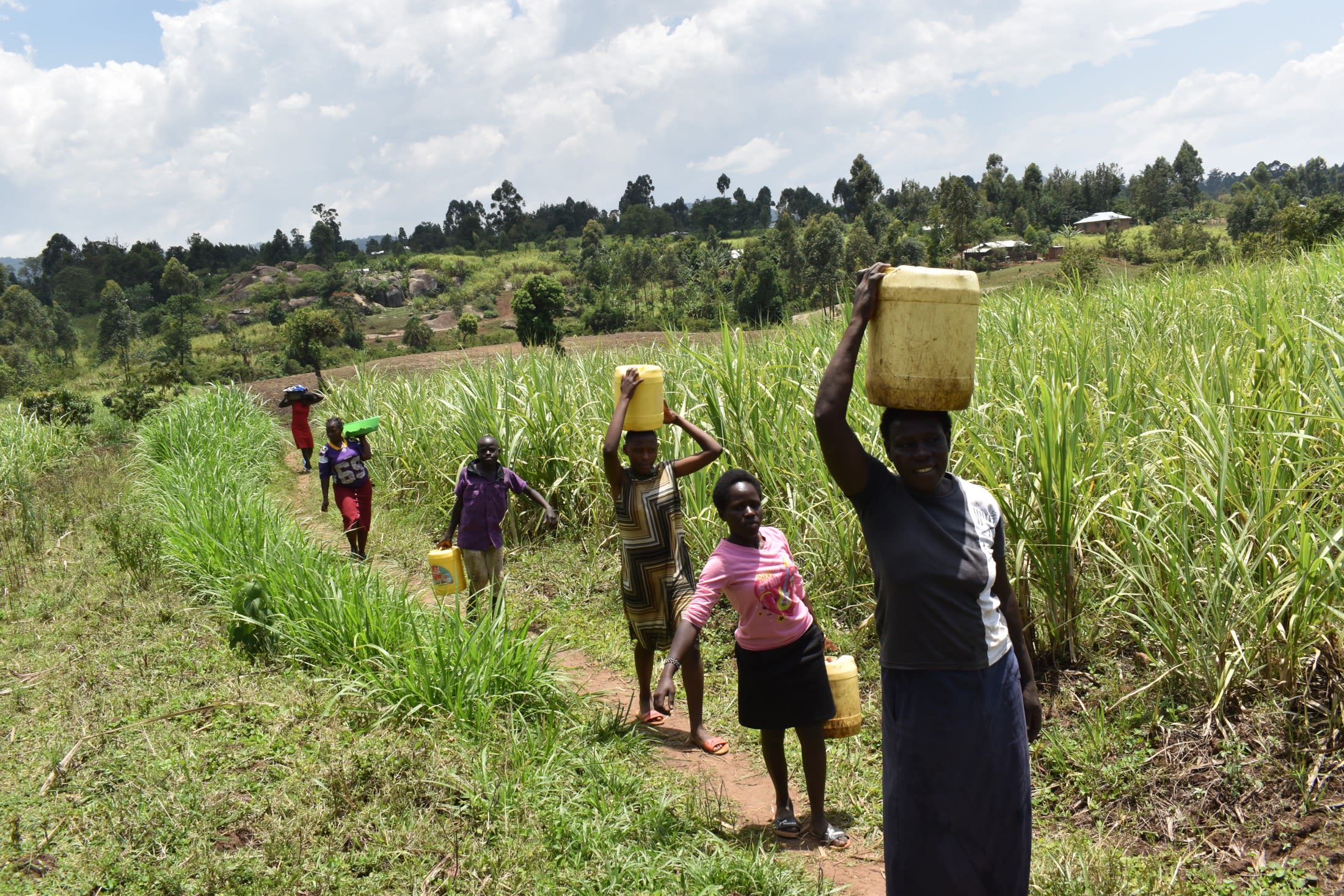
Overcrowding is another issue. People outside the community come to collect water from the spring, especially during the dry season, increasing queues and collection times. Community members are forced to abandon other chores to fetch water early in the day, and school-age children lose time that should be used for school assignments collecting water for their parents.
It is believed that the spring's water is pure and uncontaminated if collected first thing in the morning, but sadly, that is not true. The spring is open to all sorts of contamination, and consuming it poses serious risks to people's health.
Geter Pondi, a 58-year-old farmer shown at the spring below, suspects that most of the incidences of diarrhea her children and grandchildren suffer originate from drinking the spring's water.
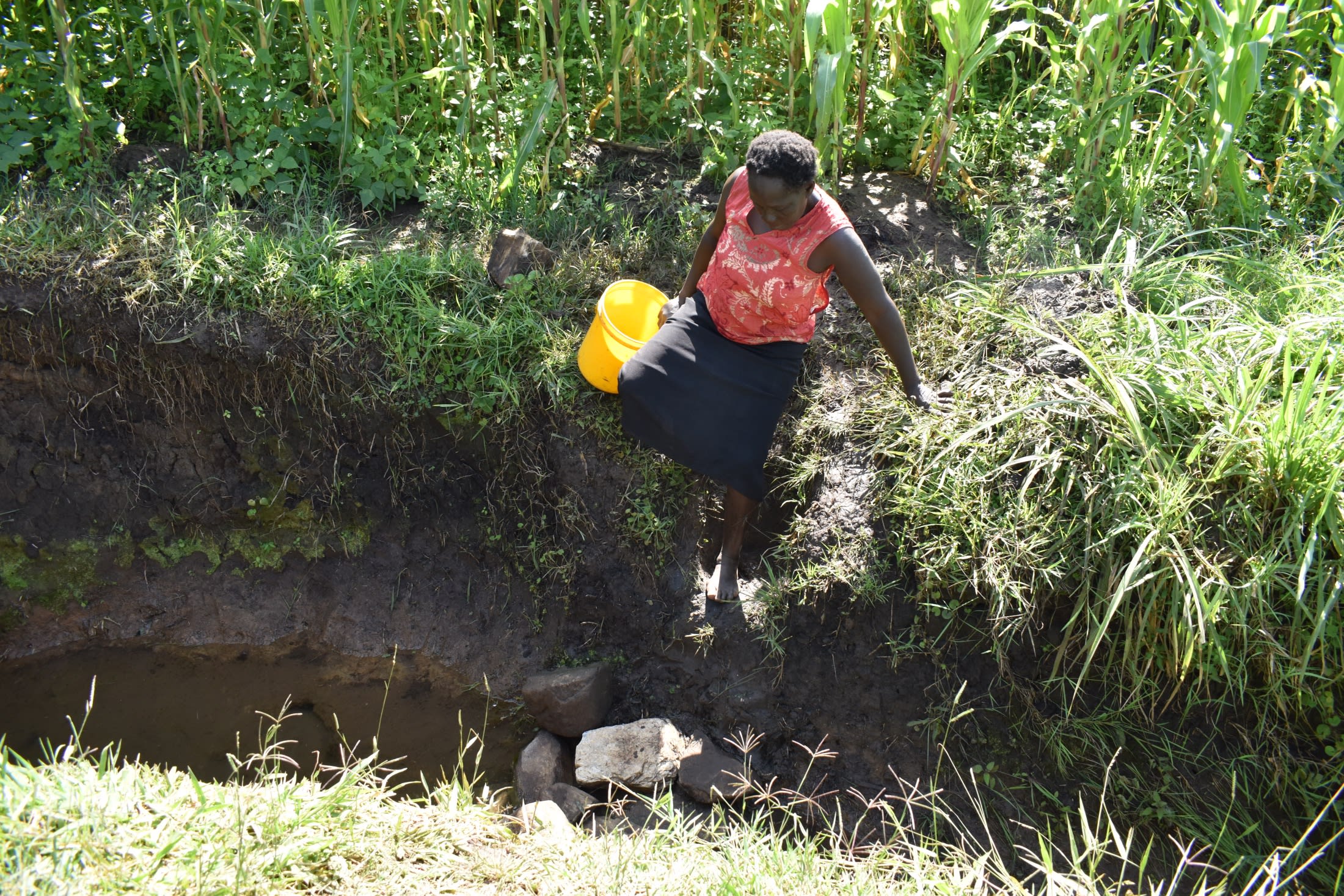
"When I receive guests from far [away], I feel embarrassed when I can't offer them drinking water," said Geter. "Some will feel shy and not tell you off. Instead, they'll leave the water untouched. But some will just tell [me] they can't take water from an unprotected spring because of their health."
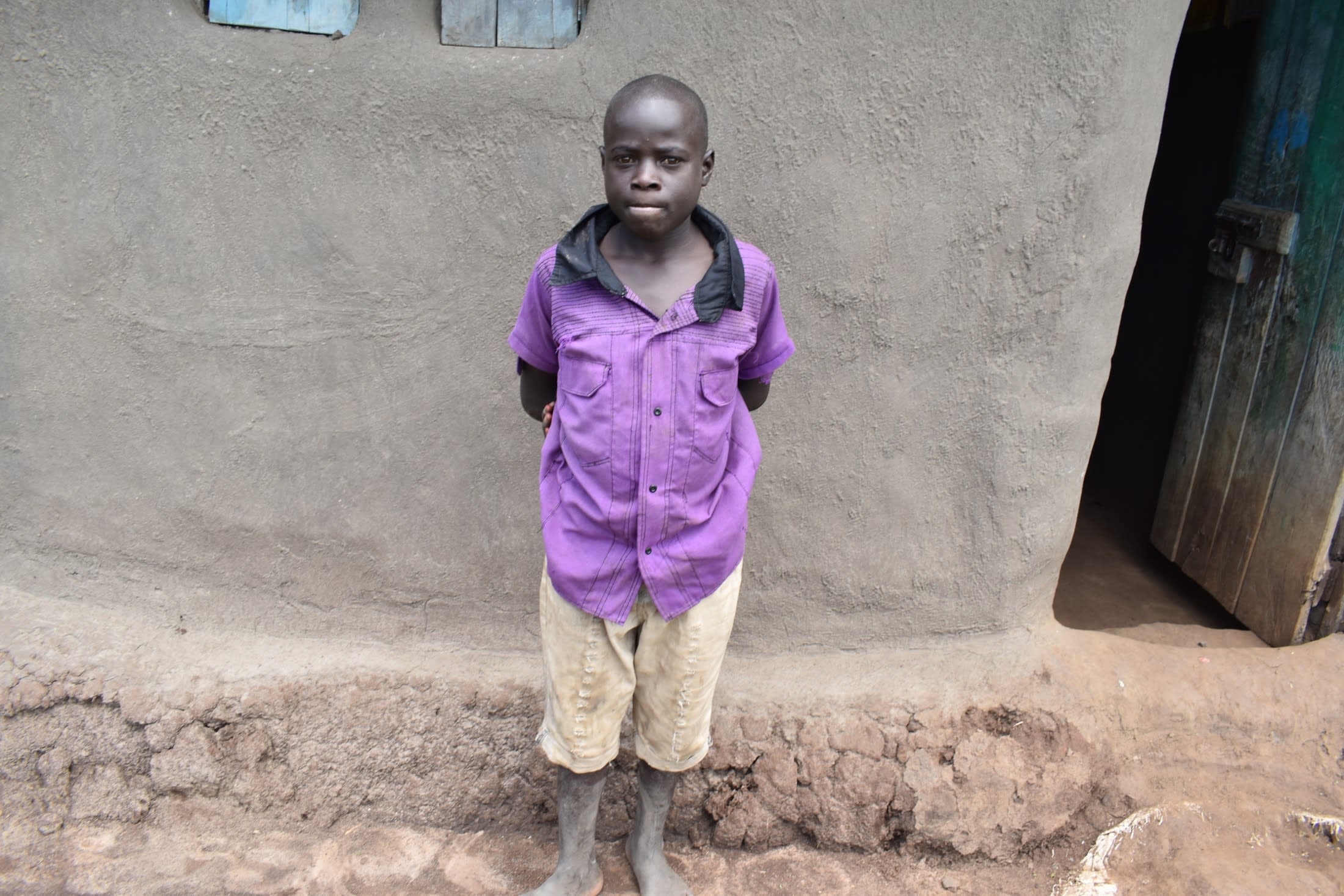
Roy (11), seen in the photo above, recounted a time he saw a dead cat near the water source. "I just don't like it when [I] draw water from a point I happened to see a dead cat around. My mind always runs wild, thinking that someone might have thrown that dead cat into our water with a bad intention and removed it so that we may not know. I feel like vomiting, but at the end of the day, that's the only source that can quench my thirst," said Roy.
Protecting the spring will allow the people of Silungai to drink safe water that no longer makes them ill and make collecting water much easier and less time-consuming.
What We Can Do:
Spring Protection
Protecting the spring will help provide access to cleaner and safer water and reduce the time people have to spend to fetch it. Construction will keep surface runoff and other contaminants out of the water. With the community's high involvement in the process, there should be a good sense of responsibility and ownership for the new clean water source.
Fetching water is a task predominantly carried out by women and young girls. Protecting the spring and offering training and support will, therefore, help empower the female members of the community by freeing up more of their time and energy to engage and invest in income-generating activities and their education.
Training on Health, Hygiene and More
To hold trainings during the pandemic, we work closely with both community leaders and the local government to approve small groups to attend training. We ask community leaders to invite a select yet representative group of people to attend training who will then act as ambassadors to the rest of the community to share what they learn. We also communicate our expectations of physical distancing and wearing masks for all who choose to attend.
The training will focus on improved hygiene, health, and sanitation habits in this community. With the community's input, we will identify key leverage points where they can alter their practices at the personal, household, and community levels to affect change. This training will help to ensure participants have the knowledge they need about healthy practices and their importance to make the most of their water point as soon as water is flowing.
Our team of facilitators will use a variety of methods to train community members. Some of these methods include participatory hygiene and sanitation transformation, asset-based community development, group discussions, handouts, and demonstrations at the spring.
One of the most important issues we plan to cover is the handling, storage, and treatment of water. Having a clean water source will be extremely helpful, but it is useless if water gets contaminated by the time it is consumed. We and the community strongly believe that all of these components will work together to improve living standards here, which will help to unlock the potential for these community members to live better, healthier lives.
We will then conduct a small series of follow-up trainings before transitioning to our regularly scheduled support visits throughout the year.
Training will result in the formation of a water user committee, elected by their peers, that will oversee the operations and maintenance of the spring. The committee will enforce proper behavior around the spring and delegate tasks that will help preserve the site, such as building a fence and digging proper drainage channels. The fence will keep out destructive animals and unwanted waste, and the drainage will keep the area's mosquito population at a minimum.

 Protected Spring
Protected Spring
 Rehabilitation Project
Rehabilitation Project













